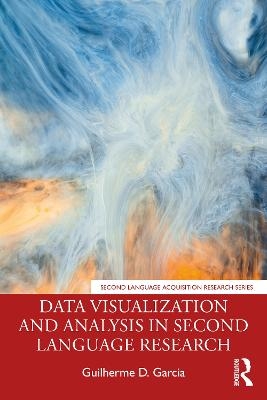
Data Visualization and Analysis in Second Language Research
Routledge (Verlag)
978-0-367-46961-0 (ISBN)
Guilherme D. Garcia is Assistant Professor of Linguistics at Ball State University, USA.
Contents
List of figures
List of tables
List of code blocks
Acknowledgments
Preface
Part I Getting ready
1 Introduction
1.1 Main objectives of this book
1.2 A logical series of steps
1.2.1 Why focus on data visualization techniques?
1.2.2 Why focus on full-fledged statistical models?
1.3 Statistical concepts
1.3.1 p-values
1.3.2 Effect sizes
1.3.3 Confidence intervals
1.3.4 Standard errors
1.3.5 Further reading
2 R basics 23
2.1 Why R?
2.2 Fundamentals
2.2.1 Installing R and RStudio
2.2.2 Interface
2.2.3 R basics
2.3 Data frames
2.4 Reading your data
2.4.1 Is your data file ready?
2.4.2 R Projects
2.4.3 Importing your data
2.5 The tidyverse package
2.5.1 Wide-to-long transformation
2.5.2 Grouping, filtering, changing, and summarizing data
2.6 Figures
2.6.1 Using ggplot2
2.6.2 General guidelines for data visualization
2.7 Basic statistics in R
2.7.1 What’s your research question?
2.7.2 t-tests and ANOVAs in R
2.7.3 A post-hoc test in R
2.8 More packages
2.9 Additional readings on R
2.10 Summary
2.11 Exercises
Part II Visualizing the data
3 Continuous data
3.1 Importing your data
3.2 Preparing your data
3.3 Histograms
3.4 Scatter plots
3.5 Box plots
3.6 Bar plots and error bars
3.7 Line plots
3.8 Additional readings on data visualization
3.9 Summary
3.10 Exercises
4 Categorical data
4.1 Binary data
4.2 Ordinal data
4.3 Summary
4.4 Exercises
5 Aesthetics: optimizing your figures
5.1 More on aesthetics
5.2 Exercises
Part III Analyzing the data 127
6 Linear regression 129
6.1 Introduction
6.2 Examples and interpretation
6.2.1 Does Hours affect scores?
6.2.2 Does Feedback affect scores?
6.2.3 Do Feedback and Hours affect scores?
6.2.4 Do Feedback and Hours interact?
6.3 Beyond the basics
6.3.1 Comparing models and plotting estimates
6.3.2 Scaling variables
6.4 Summary
6.5 Exercises
7 Logistic regression
7.1 Introduction
7.1.1 Defining the best curve in a logistic model
7.1.2 A family of models
7.2 Examples and interpretation
7.2.1 Can reaction time differentiate learners and native speakers?
7.2.2 Does Condition affect responses?
7.2.3 Do Proficiency and Condition affect responses?
7.2.4 Do Proficiency and Condition interact?
7.3 Summary
7.4 Exercises
8 Ordinal regression
8.1 Introduction
8.2 Examples and interpretation
8.2.1 Does Condition affect participants’ certainty?
8.2.2 Do Condition and L1 interact?
8.3 Summary
8.4 Exercises
9 Hierarchical models
9.1 Introduction
9.2 Examples and interpretation
9.2.1 Random-intercept model
9.2.2 Random-slope and random-intercept model
9.3 Additional readings on regression models
9.4 Summary
9.5 Exercises
10 Going Bayesian
10.1 Introduction to Bayesian data analysis
10.1.1 Sampling from the posterior
10.2 The RData format
10.3 Getting ready
10.4 Bayesian models: linear and logistic examples
10.4.1 Bayesian model A: Feedback
10.4.2 Bayesian model B: Relative clauses with prior specifications
10.5 Additional readings on Bayesian inference
10.6 Summary
10.7 Exercises
11 Final remarks
Appendix A: Troubleshooting
Appendix B: RStudio shortcuts
Appendix C: Symbols and acronyms
Appendix D: Files used in this book
Appendix E: Contrast coding
Appendix F: Models and nested data
Glossary
References
Subject index
Function Index
| Erscheinungsdatum | 02.06.2021 |
|---|---|
| Reihe/Serie | Second Language Acquisition Research Series |
| Zusatzinfo | 15 Tables, black and white; 30 Line drawings, black and white; 30 Illustrations, black and white |
| Verlagsort | London |
| Sprache | englisch |
| Maße | 152 x 229 mm |
| Gewicht | 453 g |
| Themenwelt | Geisteswissenschaften ► Psychologie |
| Geisteswissenschaften ► Sprach- / Literaturwissenschaft ► Sprachwissenschaft | |
| Mathematik / Informatik ► Mathematik | |
| ISBN-10 | 0-367-46961-8 / 0367469618 |
| ISBN-13 | 978-0-367-46961-0 / 9780367469610 |
| Zustand | Neuware |
| Haben Sie eine Frage zum Produkt? |
aus dem Bereich


